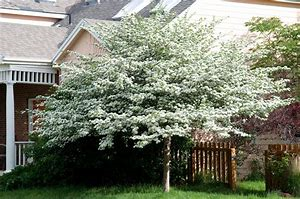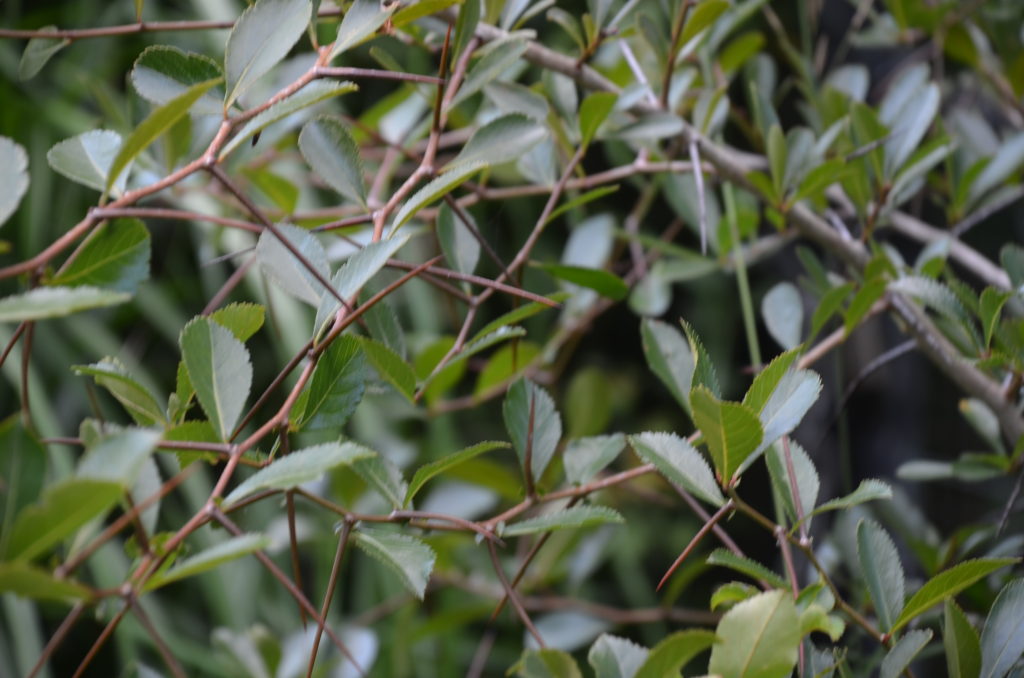n

Cockspur thorn (Crataegus crus-galli) is sometimes seen as a dense, low-branched, broad-rounded tree to 25-35 feet with horizontal branching armed with numerous large 1.5 to 3 inch long thorns. Lower branches often sweep near to the ground. It is also often seen as a tall, flat-topped shrub. This native hawthorn grows naturally from Quebec to North Carolina and Kansas (USDA hardiness zones 3-7).
Obovate to oblong-obovate dark green 2- 3” long leaves
turn to a striking red/orange in the fall. The 3 inch wide white corymb flowers
bloom in May over period of 7-10 days. Flowers emit an unpleasant peppery odor.
Flowers are followed by rounded fruits (3/8” diameter) that ripen to deep red
in fall (September-October) and typically persist to late fall. The tiny fruits
(called “haws”) are edible, but the amount of pulp is not much and is best left
for the birds.
‘Cruzam’ is commonly sold under the name of Crusader™ as a thornless plant with
a slightly more compact shape. What distinguishes the thornless Crusader form is
the absence of thorns from the species. In my opinion the species should never
be planted in any public grounds and residential safety considerations. Crusader
is a welcome alternative. Thornless tree makes plant general maintenance such
as pruning alot. Crusader is rated a superior landscape tree.
Cockspur hawthorn performs best if grown in full sunlight and any average well-drained soil. It is very adaptable to both dry and moist growing conditions. It is highly tolerant of urban pollution and will even thrive in inner city environments. The tree needs occasional maintenance and is best pruned in late winter once the threat of extreme cold has passed. It has no significant negative characteristics

Pests and diseases are a problem with most hawthorns. Plants are susceptible to cedar-hawthorn rust and fireblight. Other potential diseases include fungal leaf spots, powdery mildew, cankers, apple scab, leaf blight and twig blight. Potential insect pests include aphids, borers, caterpillars, lacebugs, leafminers and scale.
Small flowering landscape tree for lawns or open woodland areas. Notwithstanding disease susceptibility, a well-maintained tree can be ornamentally attractive. On species plants, thorns are a drawback for pedestrian areas or areas with small children. Plants may be effective when grown as barrier plants on property borders or in hedgerows.

 Posted in
Posted in 
